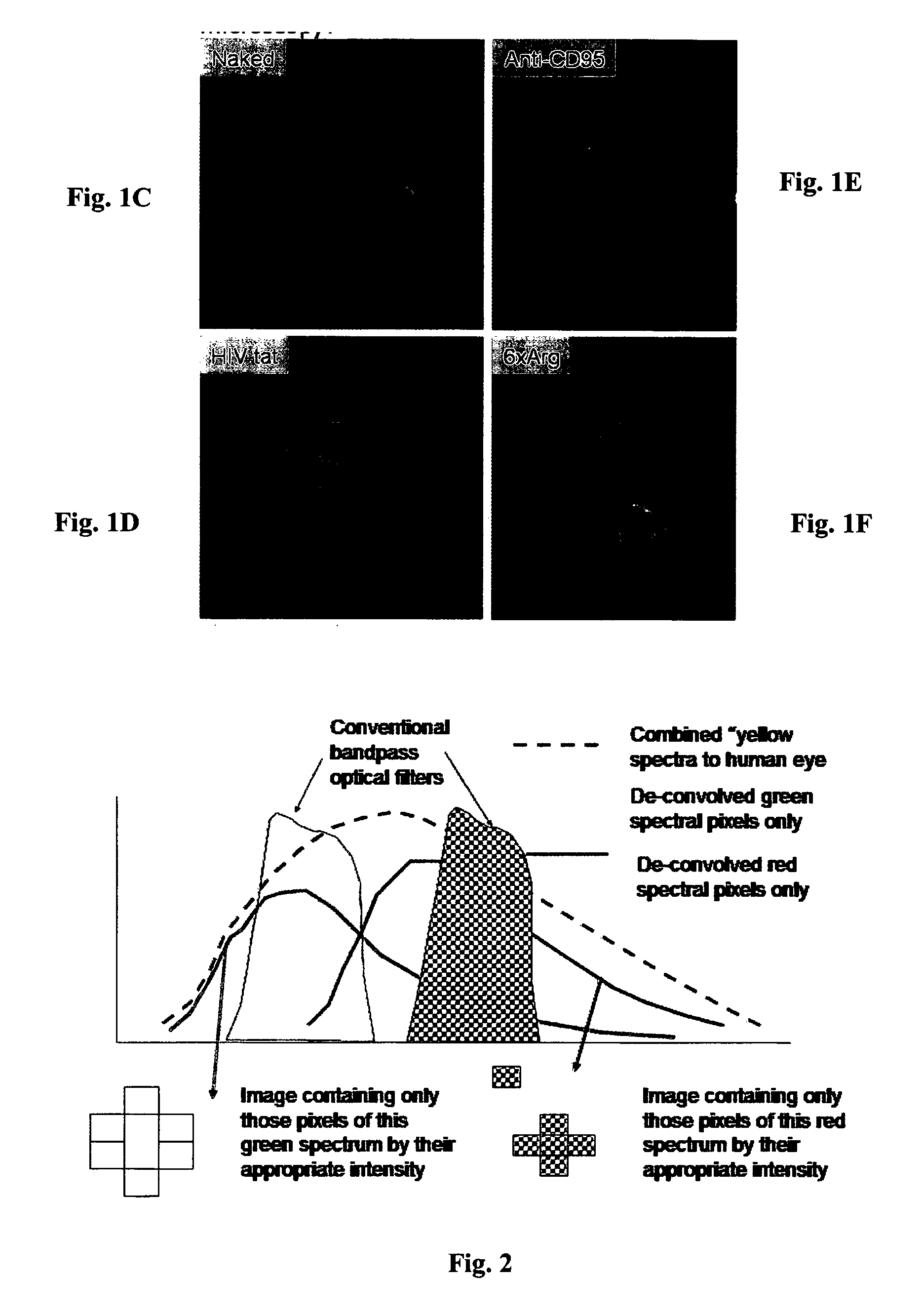Molecular programming of nanoparticle systems for an ordered and controlled sequence of events for gene-drug delivery
- Summary
- Abstract
- Description
- Claims
- Application Information
AI Technical Summary
Benefits of technology
Problems solved by technology
Method used
Image
Examples
experiment 1
[0086] One exemplary biological model was chosen as for illustration regarding Hepatitis C virus (HCV) infection of single cells. The biosensor is targeted to the same sub-cellular location where the HCV proteins are synthesized. Only when the viral protease is detected, would the expression of an anti-HCV gene product be triggered.
[0087] The nanoparticle can be built on a nanoparticle core of polystyrene, silica, gold or other material. A multicomponent HCV biosensor was constructed. This protease activated biosensor is a triple fusion protein consisting of a transactivator, cleavage, and localization domains that should target the protein to the perinuclear region. The transactivator region functions to activate transcription when released from the localized biosensor that is anchored to the targeted endoplasmic reticulum (ER). This anchored protein cannot move to the nucleus and initiate transcription due to the cytoplasmic localization, thus the transactivator is restrained suc...
experiment 2
[0102] Another exemplary biological model is for illustration is cellular radiation damage to single cells as is likely to occur during long term / deep space missions by astronauts. The principles of the present disclosure can result in a gene therapy technique that would provide increased in vivo protection against radiation damage to the blood and bone marrow of astronauts who experience long term / deep space missions. The disclosure thus provides a method and process of an in vivo intra-cellular DNA repair system for astronauts to repair radiation damaged cells that had suffered radiation damage before they progress to radiation induced leukemia or other diseases.
[0103] In general, the disclosure provides for seeking out radiation-damaged cells by providing targeting nanoparticles. A nanoparticle enters a cell and delivers a gene to detect an expression of a biosensor. If there is an expression, a determination is made as to whether the damage is repairable. If the damage is repai...
experiment 3
[0111]FIG. 10A is representation of a photomicrograph of results of a DNA repair enzyme with no localization anchoring sequence. FIG. 10B is a representation of a photomicrograph of results of a DNA repair enzyme with a mitochondrial localization anchoring sequence with transient expression. FIG. 10B is a representation of a photomicrograph of results of a DNA repair enzyme with a mitochondrial localization anchoring sequence, with stable expression. The figures will be described in conjunction with each other.
[0112] Some living organisms have a second repair pathway, not normally expressed in humans. One enzyme, glycosylase, is absent in normal human cells. This experiment tested whether nanomedicine according to the teachings of the present invention could be used to activate a second repair pathway. Preliminary test results indicated that such a mechanism could be used, and reduced the repair time of more than 24 hours using the usual DNA repair pathway functioning in normal hum...
PUM
| Property | Measurement | Unit |
|---|---|---|
| Antimicrobial properties | aaaaa | aaaaa |
| Biocompatibility | aaaaa | aaaaa |
| Cytotoxicity | aaaaa | aaaaa |
Abstract
Description
Claims
Application Information
 Login to View More
Login to View More - R&D
- Intellectual Property
- Life Sciences
- Materials
- Tech Scout
- Unparalleled Data Quality
- Higher Quality Content
- 60% Fewer Hallucinations
Browse by: Latest US Patents, China's latest patents, Technical Efficacy Thesaurus, Application Domain, Technology Topic, Popular Technical Reports.
© 2025 PatSnap. All rights reserved.Legal|Privacy policy|Modern Slavery Act Transparency Statement|Sitemap|About US| Contact US: help@patsnap.com



